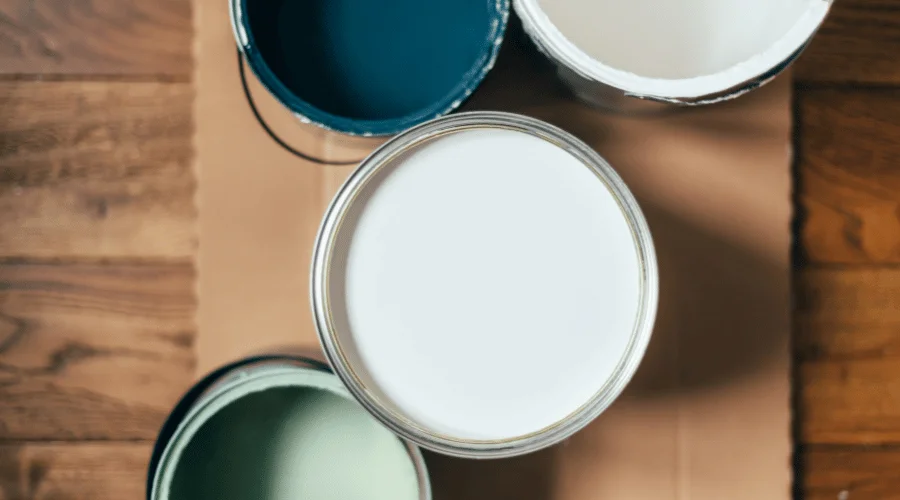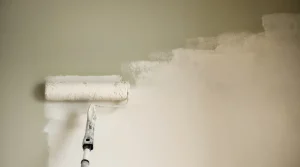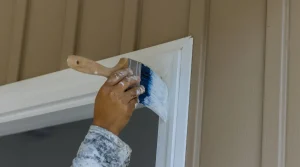The paint you choose for your home is more than a decorative decision—it directly impacts the durability, appearance, and overall value of your project. The difference between cheap and high quality paint can mean the distinction between a stunning, long-lasting finish and a disappointing, high-maintenance one.
Key Takeaways
- Quality Matters: High-quality paint delivers vibrant colors, superior coverage, and a durable finish, while cheap paint often results in a lackluster appearance, poor coverage, and a shorter lifespan.
- Long-Term Savings: Although high-quality paint is more expensive upfront, it reduces labor, maintenance, and repainting costs over time.
- Choose Wisely: Look for transparency in coverage, ingredient quality, and color variety to identify top-tier paints.
What Happens When You Use Cheap Paint
Opting for cheap paint may initially feel like a wise budget decision, but the hidden costs can quickly pile up. Here are the common issues you may face:
- Lackluster Appearance: Cheap paint often lacks the rich, vibrant pigments found in high-quality alternatives. Colors can appear dull, uneven, or fade quickly, leaving your walls looking tired and lifeless.
- Poor Coverage: Inadequate pigmentation and inferior binders in cheap paint lead to poor coverage. You might end up using more paint or applying multiple coats to achieve acceptable results, negating any initial savings.
- Shortened Lifespan: Paint made with low-grade materials is more susceptible to cracking, chipping, and peeling. This means you’ll be repainting your walls more frequently than you would with quality paint.
How to Know If the Paint You’re Using Is Cheap
Identifying cheap paint doesn’t require an expert eye; here are some indicators to watch out for:
- Low Price: If the price seems unusually low, the paint likely uses lower-grade ingredients and lacks durability.
- Lack of Coverage Details: Premium paints are transparent about coverage; vague or missing information often signals inferior quality.
- Limited Color Range: A restricted color selection may indicate reduced pigment variety and lower manufacturing standards.
Differences Between High-Quality Paint and Cheap Paint
Ingredients
- High-Quality Paint: Formulated with superior pigments and binders, which result in better coverage, vibrant hues, and long-term durability.
- Cheap Paint: Contains fillers and lower-quality pigments, leading to uneven application and dull finishes.
Application
- High-Quality Paint: Features advanced formulations for smoother application, better adhesion, and fewer coats needed.
- Cheap Paint: Often requires more effort and coats to achieve even minimal results.
Durability
- High-Quality Paint: Resists fading, cracking, and peeling, ensuring your walls look fresh for years.
- Cheap Paint: Tends to deteriorate quickly, necessitating frequent touch-ups or repaints.
Why Using Cheap Paint Costs You More
Labor Costs
Cheap paint often requires additional coats, increasing the time and effort needed for the project. If you’re hiring professional painters, this translates into higher labor expenses.
Frequent Repainting
Due to its short lifespan, cheap paint necessitates repainting more often. Over time, these repeated purchases and applications far exceed the cost of an initial investment in high-quality paint.
Aesthetic Compromises
The subpar finish of cheap paint can detract from the appearance of your home. If you’re unsatisfied with the results, you may end up repainting sooner than expected, further escalating costs.
FAQs About Cheap vs. Quality Paint
1. Why is high-quality paint more expensive?
High-quality paints use superior pigments, binders, and additives that enhance coverage, durability, and color vibrancy. These advanced materials and formulations drive up costs but provide lasting value.
2. Can cheap paint ever be a good choice?
Cheap paint may work for temporary projects, such as rental properties or short-term fixes. However, for long-term solutions or high-traffic areas, high-quality paint is a better investment.
3. How do I identify paint at the store?
Look for trusted brands, detailed coverage information, and certifications like low-VOC or environmentally friendly labels. High-quality paints also come with a wider range of finishes and colors.
4. Is there a significant difference in the number of coats required?
Yes. High-quality paints often cover surfaces with one or two coats, while cheap paint typically requires additional applications to achieve even basic coverage.
5. How does paint quality affect my home’s value?
A high-quality paint job enhances curb appeal and interior aesthetics, potentially increasing your home’s market value. Conversely, cheap paint can detract from your property’s overall impression.
6. Can I save money by mixing cheap and quality paint?
Mixing different grades of paint can compromise the quality of the final product. It’s best to stick with one high-quality product to ensure consistent coverage and durability.
7. What’s the best way to calculate paint costs for a project?
Estimate the total surface area you’ll paint and refer to the coverage details provided by the manufacturer. Remember, high-quality paint often requires fewer coats, making it more cost-effective in the long run.
8. Do high-quality paints offer better environmental benefits?
Yes. Many premium paints are formulated with low-VOC (volatile organic compounds) or eco-friendly materials, making them safer for your home and the environment.
Why Investing in Quality Paint Matters
When you choose quality paint, you’re not just paying for a superior product; you’re investing in the longevity and beauty of your home. Here’s why it pays to prioritize quality:
- Durability: High-quality paints last longer, requiring fewer repaints over the years.
- Enhanced Aesthetics: Premium paints provide a richer, more vibrant finish that elevates your space.
- Cost Efficiency: Though the upfront cost is higher, the reduced need for frequent repaints and better coverage saves money in the long run.
Closing Thought
The choice between cheap and quality paint is more than a financial decision; it’s about making sure your house endures and shows your personal taste. Make the wise decision and spend money on high-quality paint—you’ll thank yourself for years to come.
Transform your home with New City House Painters, where quality and color come together for exceptional results. Reach out to us today to elevate your space with professional painting services!







